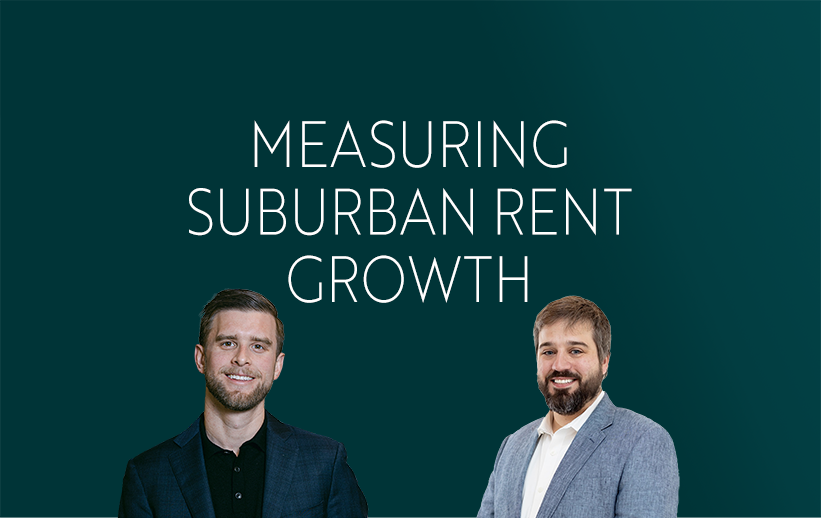
Measuring Suburban Rent Growth
After many years in which downtown, urban spaces were the brightest spot in the metro-area, focus has shifted to the suburbs. But how much has the suburban apartment market grown, and where is this growth the strongest? And what exactly are the technical requirements for to qualify as a suburb? Apartment List puts some data behind these trends (well, not that last question–that last question gets some help from the Harvard Joint Center for Housing Studies):
Apartment List: “The Suburban Rent Boom Has Been a Constant Throughout the Pandemic” – https://www.apartmentlist.com/research/suburuban-rent-boom-a-constant-throughout-the-pandemic
- This article got me thinking about the difference between a city and a suburb, and getting an agreement on this difference has proven to be difficult.
- According to a paper from the Harvard Joint Center for Housing Studies, there are three main categorization schemas.
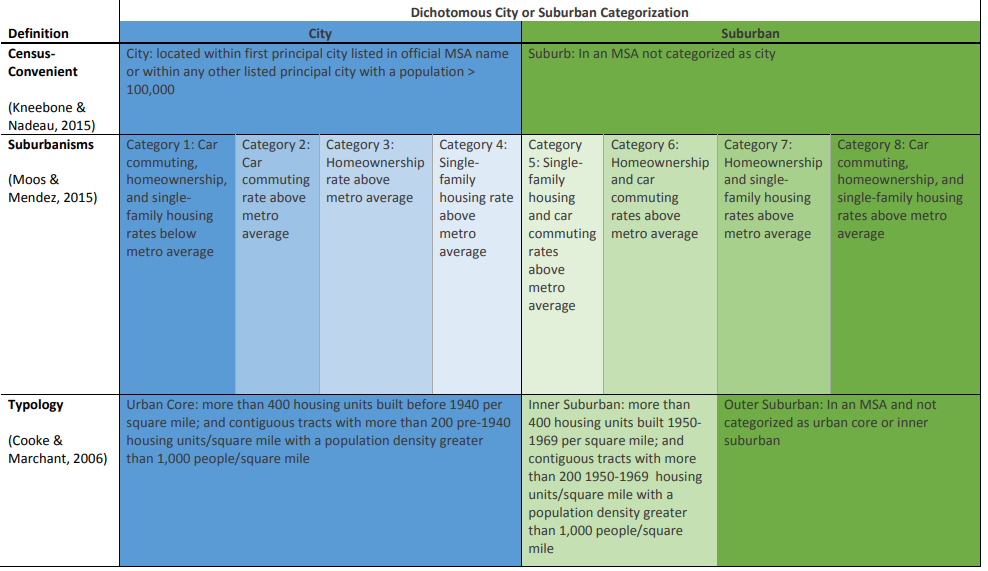
- 1. Is it inside the MSA? Then it’s a city. Is it outside the MSA? It’s a suburb. This one is lazy, but also flexible! Yes, there are agreed-upon MSAs, but so, so many of these include communities that meet the definition of cities in and of themselves. It gets to be a little bit of a relative and subjective thing when you go by this simple MSA vs not-MSA definition, which, I would wager probably was more useful a long time ago when cities were smaller.
- 2. The next definition uses a continuum of suburbanisms, a spectrum of city vs. suburbs. The more car commuting, single-family homes, and home ownership, the more you are in the suburbs. If you believe in a walkable suburb, the suburbanism system may not work for you.
- 3. This historical definition does a little bit better mapping out the progression of a city into the surrounding areas: Were more than 400 housing units per square mile built before 1940 OR is it a contiguous tract of land that has at least 1,000 people and at least 200 units built before 1940? That’s a city (they call it an “urban core”). All of the above except the homes were built between 1950-1969? That’s Inner suburban. If you’re still in the MSA, but you’re not inner suburban or urban core? Then you’re outer suburban. The critique of this view is that if you base everything on the date of construction, you’re going to miss a lot of these suburbs that have changed and look more like a city. My critique of this view is that it leaves out homes built between 1941 and 1949. What am I supposed to do there!
- Personally, I don’t see why we can’t base things on relative population density, but my guess is that there’s some holes in that plan if there were areas in the CBD with less housing because of zoning differences.
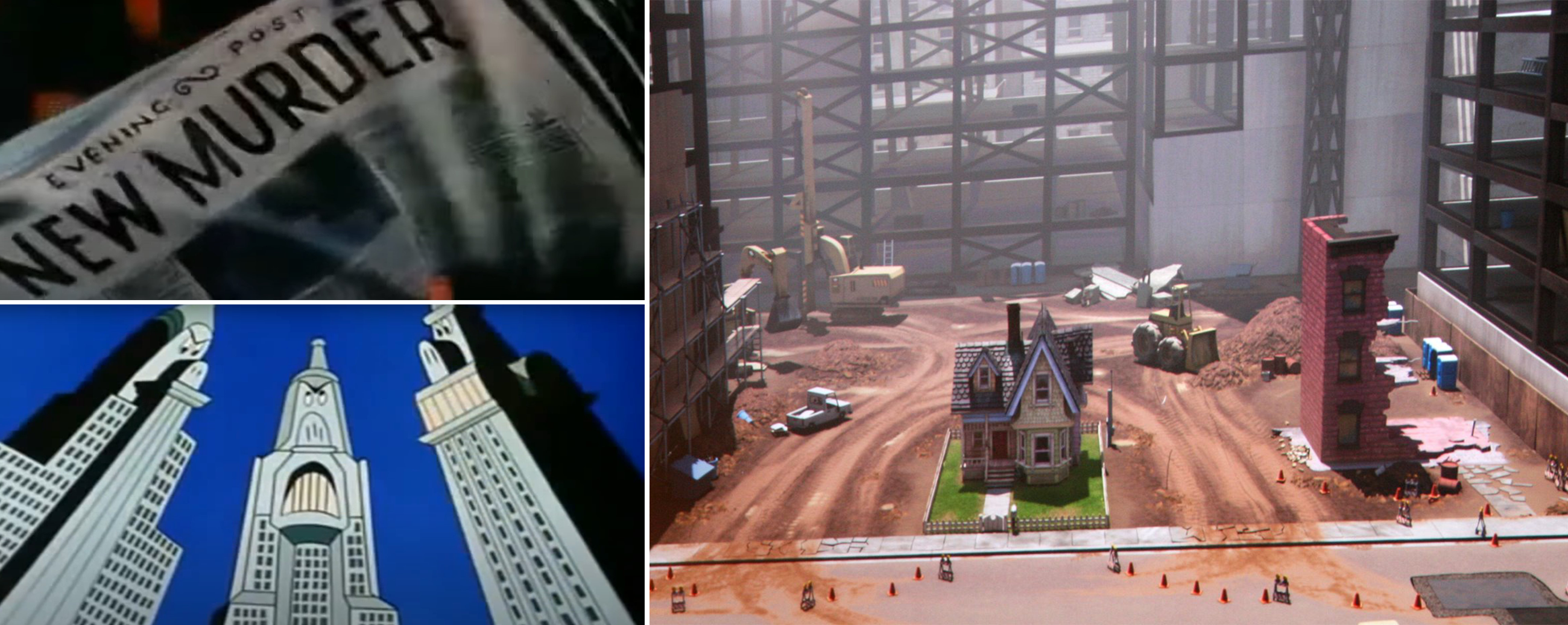
- Regardless of how you define it, even just thinking about the different definitions, you run into these clear examples of how the suburbs have changed and are constantly changing. Remember the movie “Up,” where there’s a single-family home that’s hemmed in by skyscrapers? Well that house used to be in the suburbs! The Disney cartoon Big City Greens uses that same trope, and I remember an old cartoon and book called “The Little House,” where the happy suburban house becomes a whole lot less happy when the big city grows around it. That last one has a clear suburban agenda, with skyscrapers looking decidedly mean-spirited, and city newspapers with the headline “New Murder.” My point is that this is going on right now in suburban nexuses (nexi?) surrounding larger cities. I haven’t seen any skyscrapers with scary faces, but I will be vigilant.
- In actuality, the apartment market does not need suburban-favoring propaganda to favor the suburbs given that demand and rents have grown at a considerably higher rate in these periphery communities compared to the metropole.
- “Analyzing our rent estimates across 39 large and medium-sized metropolitan areas, we find that since March 2020, rents in the suburbs of these metros have grown by 27.2 percent, on average, substantially outpacing the 19.8 percent average rent growth in the core cities that they surround”
- As Apartment List measures it, the farther out from the metropole, the stronger the effect of this suburban rent growth, and larger cities also see a more significant difference, with slower rent growth downtown relative to the periphery.
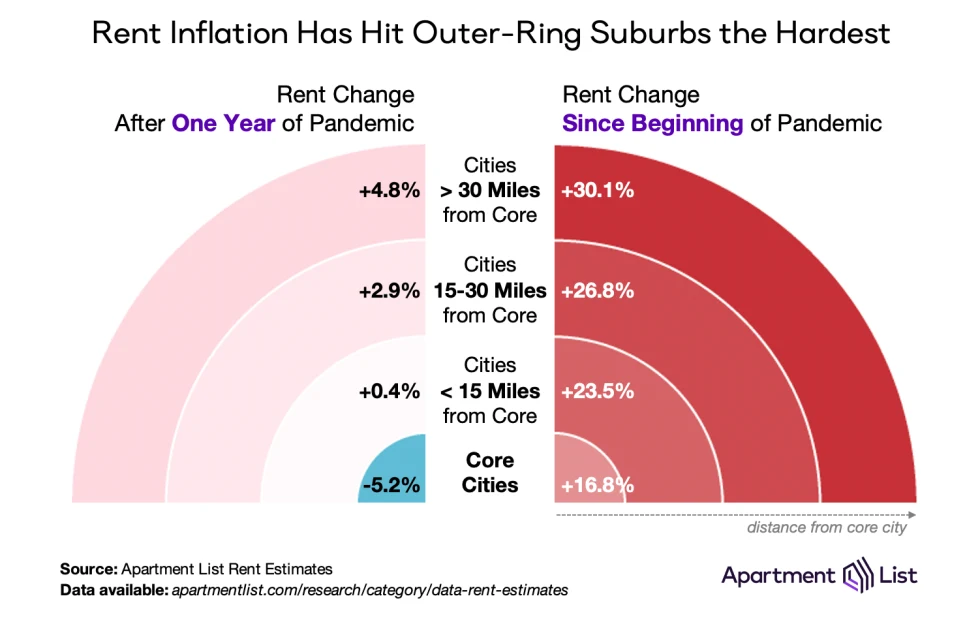
- Additionally, there are signs that rent growth in the suburbs was already growing faster than the city in the years shortly before the pandemic, and the effect is stronger for larger cities than it is for smaller ones.
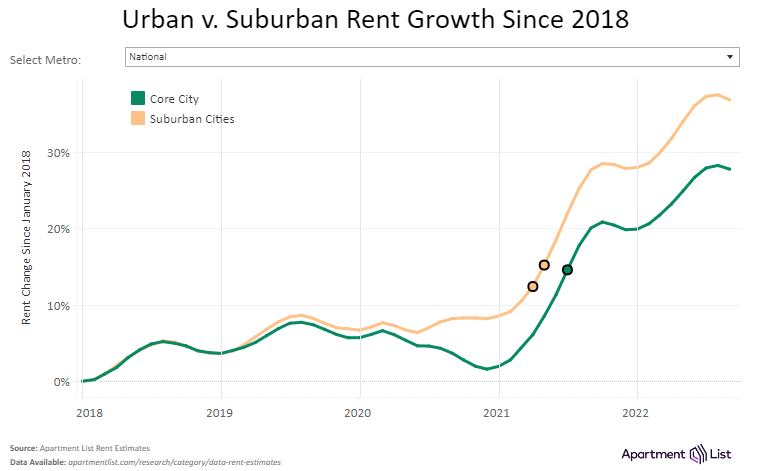
- Apartment List sees the combination of remote work and housing unaffordability driving this trend, but I think that this times pretty well with Millennials entering the age when they’re getting married and having kids. I don’t think that this trend is going away anytime soon, but I wouldn’t count out downtown sub-markets either. The growth in urbanized suburbs (is that possible) suggests that there is still ample demand for the lifestyle of the central business district.